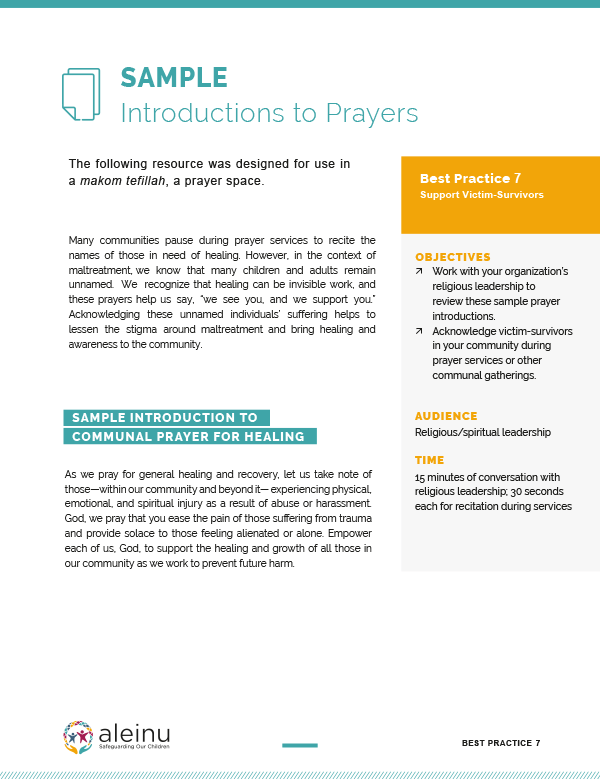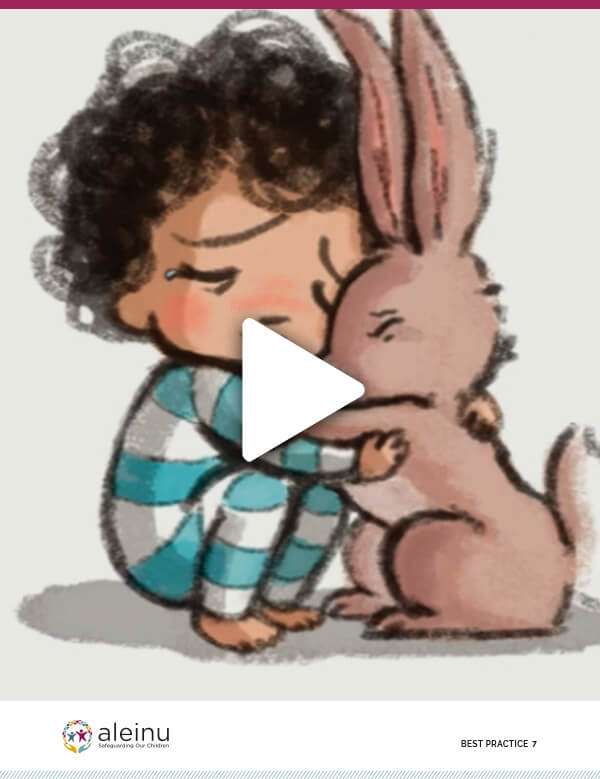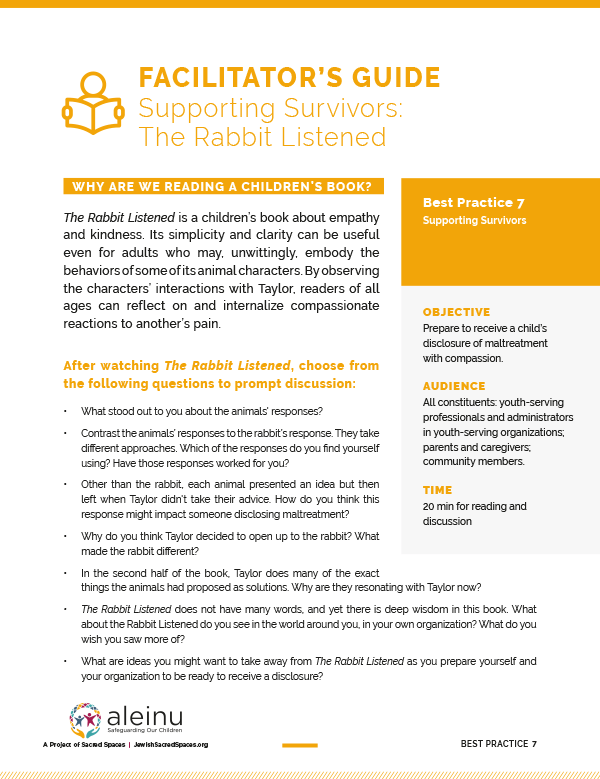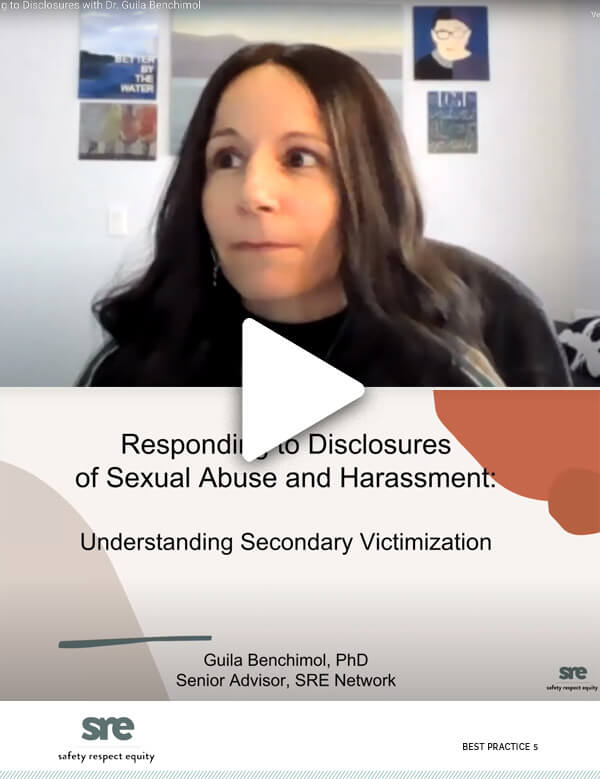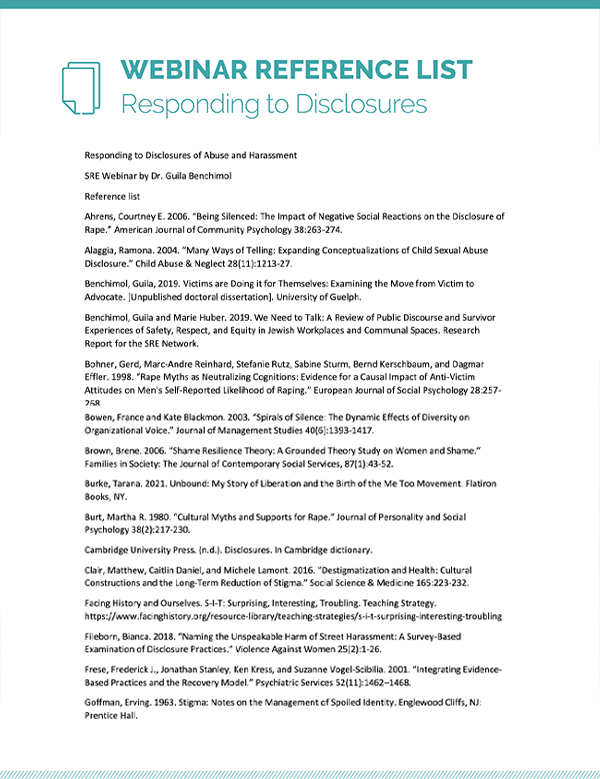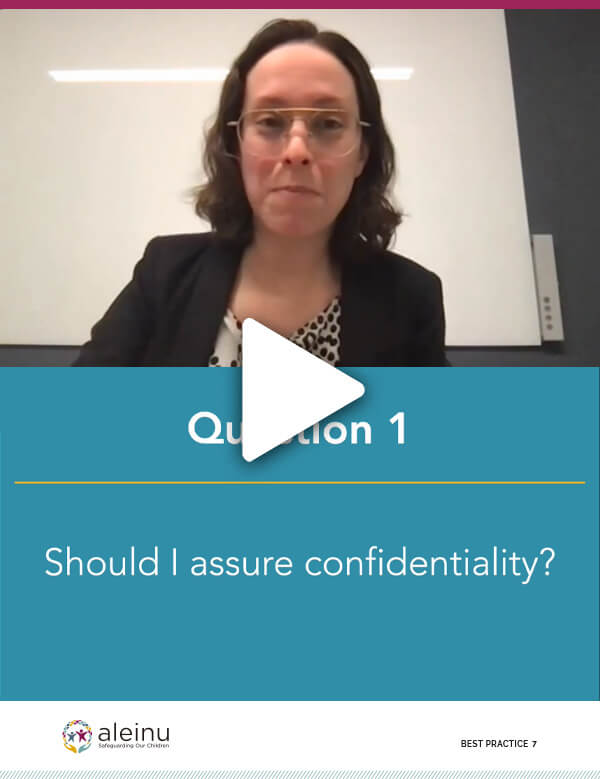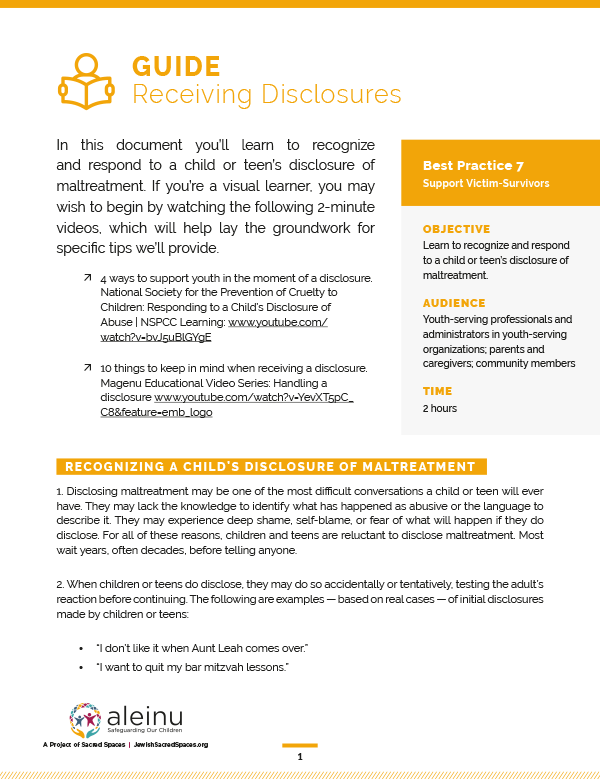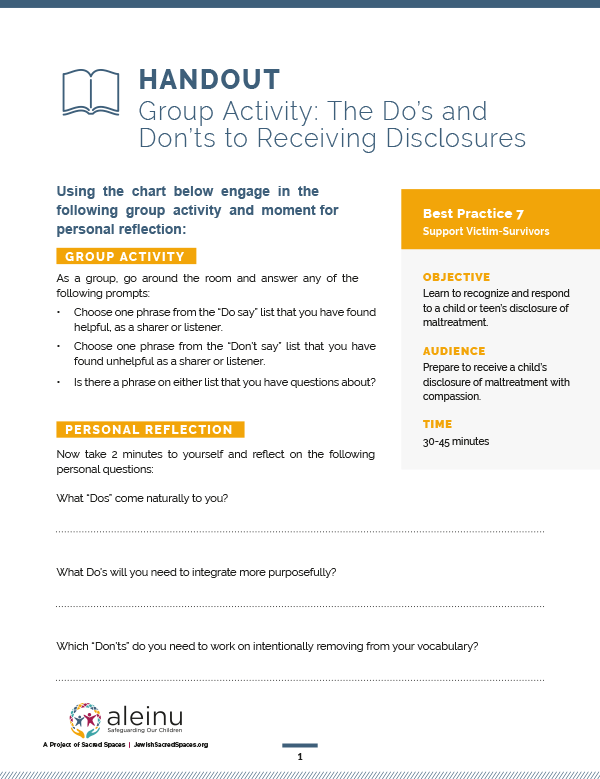Support Victim Survivors
לִמְדוּ הֵיטֵב דִּרְשׁוּ מִשְׁפָּט אַשְּׁרוּ חָמוֹץ
Learn to do good. Devote yourself to justice; aid the victim. (Isaiah 1:17)
Jews are reminded in the Book of Isaiah that we are responsible for supporting and strengthening victim-survivors. When victim-survivors experience an organization as welcoming and trauma-informed, they are more likely to attend, share, heal together, and participate. In learning how to support victim-survivors, communities gain critical skills in trauma-informed engagement, which allows our organizations to welcome more people and do more good.
This Best Practice will help your organization intentionally design supportive spaces for your entire community, including those who have experienced youth maltreatment or other forms of abuse.
Acknowledge victim-survivors during prayer services or other communal gatherings
Companion Resources
Learn how to respond to disclosures of maltreatment in ways that prioritize and promote healing.




